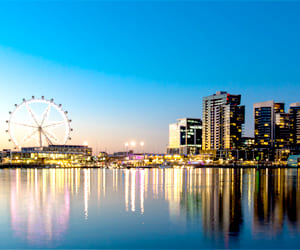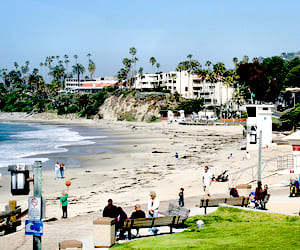The Art of Tape Removal – Finishing White Aluminium Windows With Precision
- 2 pac coatings, 2 pac painting, Aluminium Painting, Aluminium window painting service, Elite Aluminium Repainting, Gold Coast Painter
- 2 pac painting, 2pac, 2pac windows painting, Alluminium window painting services, aluminium fence restoration, aluminium security screen painting, aluminium spray painting
The Final Moment That Defines Every Job
There’s something strangely satisfying about watching tape come off a freshly sprayed window.
That crisp edge, that clean line where glass meets frame — it’s the moment that makes every hour of preparation worthwhile.
At RepaintPro, we call it the final reveal.
It’s not just pulling tape; it’s the last precision test of everything that came before — masking, pressure control, primer curing, and lacquer flow.
This article dives into the technique and discipline behind tape removal, focusing on our most requested finish: white aluminium windows across the Gold Coast.
—
Why Tape Removal Matters So Much
You can have perfect surface prep, flawless primer adhesion, and a smooth topcoat — but if the edges fail, the whole job looks amateur.
A clean tape edge defines craftsmanship.
It tells you that every part of the process was controlled, from the first sanding pass to the final spray.
That’s why we film these moments and share them online — because they show the truth: precision isn’t just in spraying; it’s in stopping.
—
White Aluminium Windows – The Most Unforgiving Finish
Black frames are popular because they hide edges and light distortion.
White, however, shows everything.
Spraying aluminium in white exposes every grain of texture, every tiny line of overspray, and every uneven mask edge.
That’s why our tape removal videos featuring Surfmist or Pearl White finishes draw so much attention — viewers can instantly see the difference between a tidy job and a rushed one.
For homeowners, white frames give the cleanest architectural look.
For painters, they demand the tightest control.
—
The Process Before the Pull
1. Masking and Edge Setup
The entire success of tape removal begins with masking.
We use high-temperature, clean-release automotive-grade tapes — not hardware-store rolls.
These tapes resist solvent bleed and allow razor-sharp lines even after multiple coats.
Edges are double-taped at the start:
The first layer seals against glass or brick.
The second layer provides a lifting tab for fast removal before curing locks the edge.
This small setup step saves hours later and prevents “ragged” edges that occur when the film hardens over the tape line.
2. Spraying Technique
When we spray, every edge is treated as if it’s a border on a sign.
We angle the gun slightly away from tape lines to prevent build-up on the tape edge.
Light tack coats at 28 PSI followed by two to three heavier passes build colour and gloss gradually.
That careful balance means the paint meets the tape, not piles against it.
3. Timing the Pull
This is where experience counts.
Tape that’s removed too soon can leave smears or stretch wet lacquer.
Too late, and the coating hardens over the edge, tearing when pulled.
At RepaintPro, we watch the flash-off window like a clock.
Depending on humidity, we usually start tape removal between 10 and 25 minutes after the last coat.
The surface is still warm and soft, but touch-dry — ideal for a clean separation.
—
The Technique – How to Remove Tape Like a Professional
1. Angle and Direction
Tape is pulled back on itself at a 45-degree angle, never straight up.
This motion cuts through the soft paint edge instead of lifting it.
2. Steady Motion, Constant Tension
No jerks, no stops.
We keep continuous pressure, moving at a speed that matches the lacquer’s tack level.
It’s almost rhythmic — each frame, each reveal, identical.
3. Corner Awareness
Corners are pre-cut with a razor before pulling.
That prevents the film from tearing or creating a “dog-ear” mark on freshly sprayed aluminium.
4. Heat and Environment
In cooler Gold Coast mornings, paint sets slower.
If needed, a low-temperature heat gun gently warms edges to improve release.
We never force the pull — the finish always dictates the pace.
—
Why We Share Tape-Removal Videos
People watch because they’re satisfying — but there’s more to it.
These videos prove authenticity.
They show the job as it happens, not edited before and afters.
When tape peels cleanly off white frames, revealing perfect lines between glass and aluminium, it tells the viewer everything they need to know about the process.
That’s why tape-removal clips have become RepaintPro’s signature posts.
They show that true precision happens when the work is done, not when it starts.
—
White Frame Projects Across the Gold Coast
Mudgeeraba and Robina
Homes with white soffits and light renders benefit from frames sprayed in Surfmist or Pearl White.
The tape removal stage brings the house together — white on white, seamless from frame to fascia.
Broadbeach and Mermaid Waters
High sunlight reflections here amplify gloss.
Every frame is checked from multiple angles before tape pull to ensure uniform sheen.
Benowa and Ashmore
These suburbs feature colonial and French-style frames with multiple bars.
Each tiny section means dozens of tape lines — hundreds of precision pulls.
Bundall and Sorrento
Waterfront homes mean higher humidity and glare.
Timing the tape removal is critical to avoid edge softening in moist air.
Across every suburb, the same rule applies: no overspray, no bleed, no residue.
—
Tools of the Trade
We rely on more than tape:
Green automotive masking tape – solvent-resistant, leaves zero residue.
Edge razors and plastic lifters – to separate tape from soft film without scratching glass.
Fine-line vinyl tape – for curved or colonial bars.
Clean nitrile gloves – so skin oils don’t mark fresh lacquer.
Each roll and blade is replaced often.
There’s no point saving a few dollars if one roll of tape ruins an entire frame.
—
The Science of Adhesion and Release
Paint molecules crosslink as they cure.
If left too long, that bond forms over the tape edge.
When the tape is finally pulled, it can fracture the edge or create “ghost lines.”
That’s why we always remove tape before the final cure but after the surface sets.
It’s a narrow window — but it’s the secret to glass-sharp edges on white frames.
—
Why White Is Harder Than Black
White doesn’t hide shadows.
Every millimetre of overlap or overspray shows instantly, especially under Queensland sunlight.
When we spray black or Monument, we can rely on light absorption to disguise microscopic unevenness.
White, by contrast, reflects everything — it’s a mirror of precision.
That’s why our white-window tape-pull videos are so valuable.
They demonstrate the discipline required to master light tones on reflective metal.
—
Preparing for Tape Removal
Before we start pulling, we inspect every edge:
1. Check film thickness. No heavy build near tape lines.
2. Confirm flash-off. The lacquer should be soft but no longer stringy.
3. Remove safety sheets first. This prevents pulling plastic tension against fresh edges.
4. Work from top down. Gravity helps prevent dust settling on open edges.
Even the order of removal matters — we always start with horizontal edges to let air flow dry the verticals naturally.
—
Inside vs Exterior
Interior windows are trickier — tighter clearances, carpet protection, and limited light.
Tape removal there demands smaller movements and better visibility.
We use portable LED panels to check reflection and gloss uniformity before removing tape.
Exterior frames offer space but more environmental risk — wind, insects, or airborne dust.
That’s why timing and masking quality are everything.
—
Common Mistakes (and How We Avoid Them)
1. Leaving tape too long – causes tearing or jagged lines.
2. Removing in the wrong direction – can lift edges.
3. Using low-grade tape – leaves glue or residue.
4. Over-spraying edges – creates ridges visible after pull.
5. Skipping primer sanding – leads to adhesion failure that shows during removal.
Each mistake adds hours of rework.
Our process eliminates them entirely.
—
Maintaining the Finish After Tape Removal
Once the tape is off, we do a final micro-inspection with LED lighting.
If any minor dust nibs appear, they’re carefully wet-sanded with 2000-grit and polished with fine compound.
For white frames, that step ensures reflection continuity and removes any overspray haze on glass.
We also remind clients:
Avoid touching the frames for 24–48 hours.
Don’t wash or wipe until the coating has fully cured.
Let natural air flow finish the job.
This patience protects the hard work that perfect tape removal reveals.
—
Why We Film It – The Real Transparency
There’s no editing trick that can fake a perfect tape pull.
Either the edge is sharp or it’s not.
That’s why these videos prove our standards better than any testimonial could.
Viewers can see:
The clean separation of colour and glass.
The even gloss reflection along the length of the frame.
The absence of drips, sags, or overspray shadows.
Every successful tape pull is the visible result of hours of prep, masking, and disciplined spraying.
—
Environmental Factors on the Gold Coast
Tape behaviour changes with temperature.
In Mudgeeraba or Nerang, cooler hinterland mornings slow curing.
In Burleigh or Palm Beach, sea breeze dries lacquer faster.
We adjust everything — primer type, solvent ratio, and flash-off time — to suit local conditions.
That’s why our edges look consistent from Coomera to Coolangatta.
—
Matching Tape Removal to Colour Systems
White lacquer systems such as Concept Acrylic Lacquer or automotive 2-pac polyurethane respond differently to tape edges.
We test each system before full use.
Single-pack lacquers soften longer, requiring later removal.
2-pac lacquers set faster, ideal for precise timing.
Our film build targets remain consistent: around 40–60 microns DFT for the entire lacquer layer.
That ensures edges stay crisp and strong.
—
The Satisfaction Factor
Ask any painter what their favourite moment is — most will say the final coat.
For us, it’s when the last strip of green tape curls off and reveals a flawless white frame.
That’s the moment the homeowner usually appears, eyes wide, saying, “It looks brand new.”
And it does — because it’s not just paint; it’s a process that rebuilds the surface to factory condition.
—
Connecting Tape Removal to the Bigger Picture
Every sharp edge ties into the broader story we share across our blogs:
Preparation posts show what makes adhesion possible.
Primer articles explain why coatings last.
Tack-coat videos teach film build and flow.
Colour-selection guides help clients visualise results.
Tape-removal posts prove the quality visually.
Together, they form a full circle of transparency — a record of real craft happening every day on the Gold Coast.
—
Why Clients Appreciate the Detail
Customers tell us they love seeing behind the scenes.
They understand that a perfect edge means a professional job, and that detail builds confidence.
Sharing these technical insights also protects clients from misinformation.
They know what proper aluminium spraying should look like, so they can recognise shortcuts elsewhere.
—
Beyond Aesthetics – The Functional Role of Sharp Edges
A clean tape edge doesn’t just look better.
It prevents future peeling and water ingress.
When paint overlaps onto glass or sealant, moisture eventually finds a way underneath.
A clean, defined boundary locks the coating exactly where it belongs.
That’s why we treat tape removal as part of quality assurance, not just presentation.
—
The RepaintPro System in Summary
Every window we spray — whether black, Monument, or white — follows the same proven sequence:
1. Clean and sand.
2. Mask with high-grade tape.
3. Prime for adhesion.
4. Apply tack coat and full coats at controlled pressure.
5. Time the flash-off perfectly.
6. Remove tape with precision.
7. Inspect, reassemble, and hand over spotless results.
That’s how we deliver factory-grade finishes on-site.
—
Local Expertise Across the Coast
Our tape-removal craftsmanship extends through every region we service:
Robina, Varsity Lakes, Mudgeeraba, Reedy Creek – family homes and renovations.
Bundall, Benowa, Broadbeach Waters – waterfront residences.
Southport, Labrador, Parkwood – mixed residential and commercial projects.
Yatala, Burleigh, Coomera – industrial and 2-pac shopfronts.
Each suburb brings its own climate and architectural style, but our finish stays consistent.
—
Why We Keep Posting These Jobs
Because education never ends.
Every time we share a tape-removal clip, another homeowner realises:
Spraying aluminium is a technical craft.
Professional masking prevents damage.
Proper timing and control deliver results that last.
That awareness builds better expectations — and better results for everyone.
—
We’re Not Here to Sell You Anything
We’re here to solve a problem: what to do with those windows that don’t match anything anymore.
Sometimes the solution is a full colour change; sometimes it’s refinishing in the original tone.
Either way, when the last piece of tape comes off, it looks right again.

Stephen Lockyer
Professional painters and Decorators on the Gold Coast. Serving all your interior and exterior painting needs.
Social Share











































































































































































